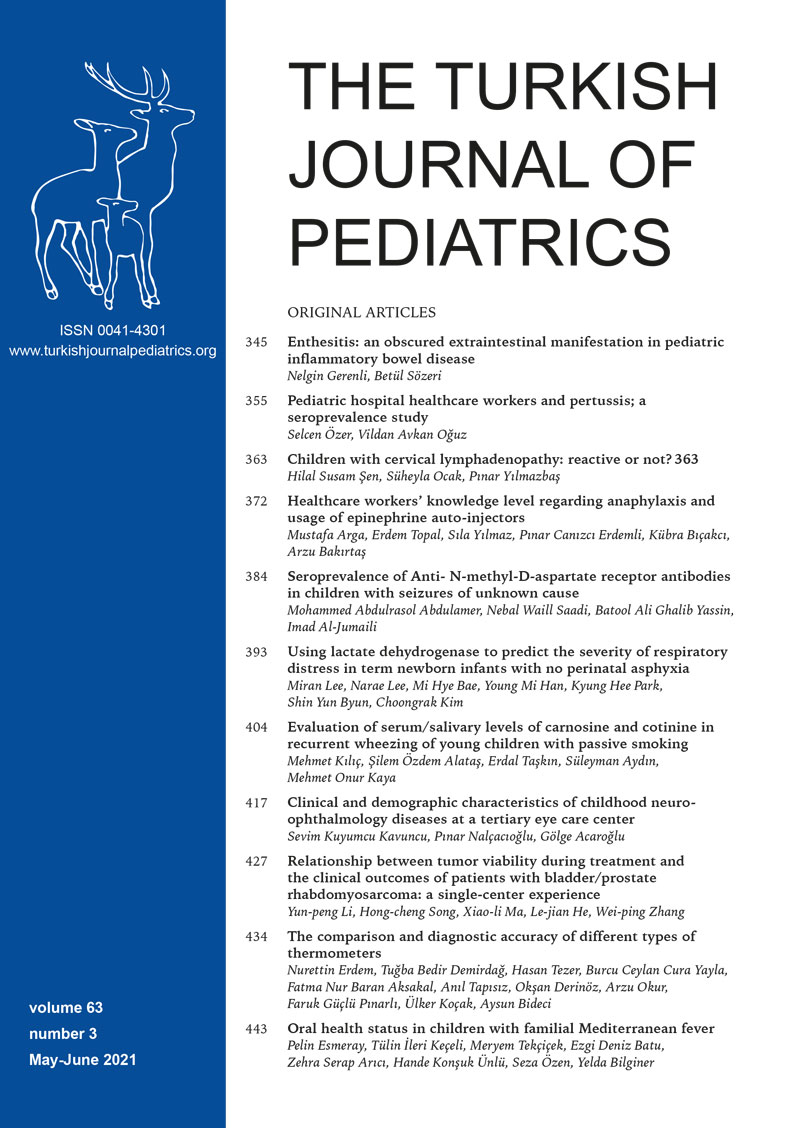Abstract
Background. To evaluate the demographic, etiological, and clinical properties, as well as the treatment modalities of neuro-ophthalmological diseases in childhood.
Methods. We retrospectively analyzed the clinical data of patients younger than 18 years old who were referred to the Neuro-Ophthalmology Department of Ulucanlar Eye Hospital from 2004 to 2019.
Results. Of 1,910 patients who presented to the Neuro-Ophthalmology Department, 128 (6.7%) were younger than 18 years old at diagnosis, and their data were analyzed. The three most common diagnoses were congenital optic disc (OD) abnormalities in 43 (33.5%), optic neuropathies in 42 (32.8%), and idiopathic intracranial hypertension in 11 (8.5%) patients. The most frequent symptoms were as follows: decreased visual acuity in 36 (28.1%), headache in 32 (25%), and no symptoms in 19 (14.8%) patients. The best visual prognosis was associated with inflammatory optic neuritis, while hereditary and compressive optic neuropathy resulted in poor visual acuity outcomes.
Conclusions. Congenital OD abnormalities and optic neuropathies are the most frequently seen disorders among children with neuro-ophthalmological diseases. Clinicians should also be aware that children without any symptoms may also have neuro-ophthalmological disorders.
Keywords: Children, congenital optic disc abnormalities, neuro-ophthalmological diseases, optic neuropathies
Copyright and license
Copyright © 2021 The Author(s). This is an open access article distributed under the Creative Commons Attribution License (CC BY), which permits unrestricted use, distribution, and reproduction in any medium or format, provided the original work is properly cited.














